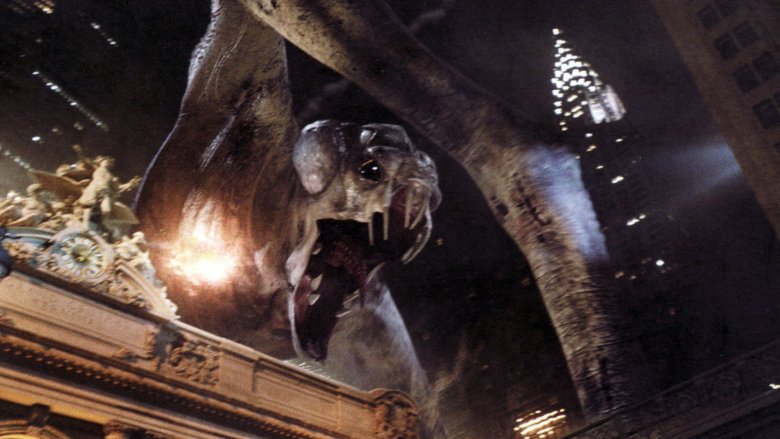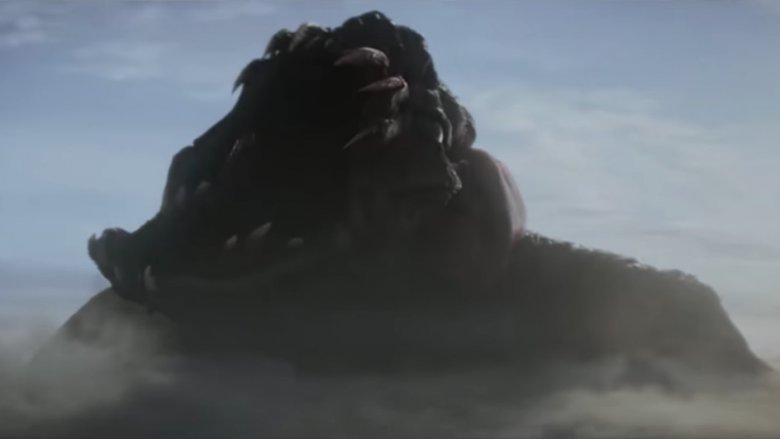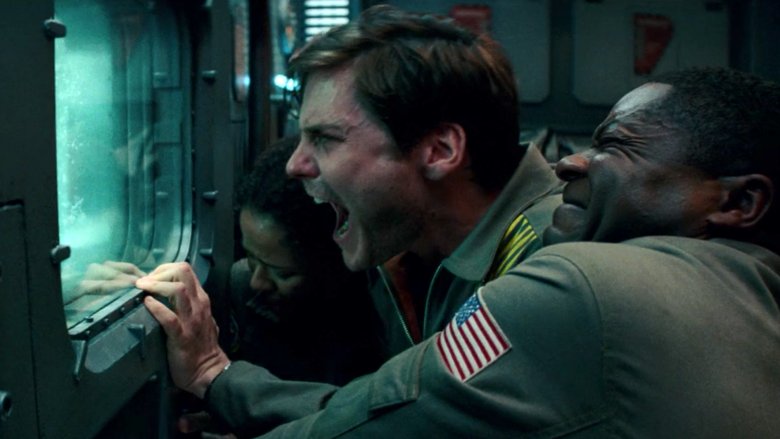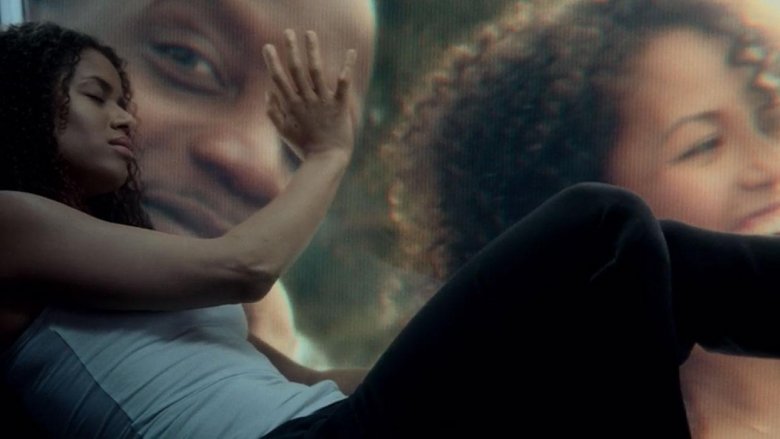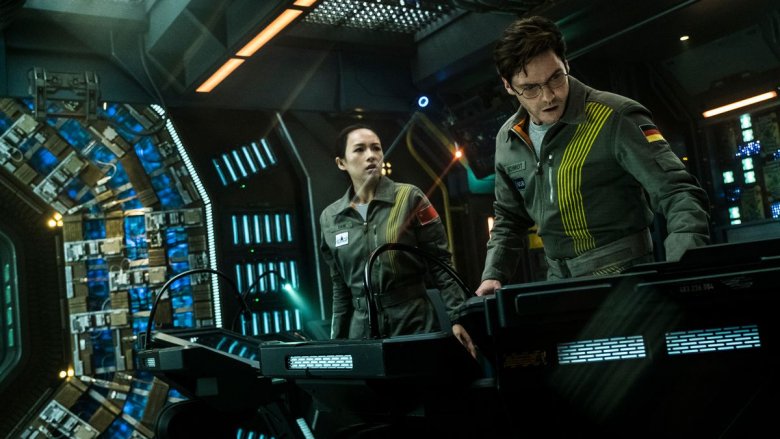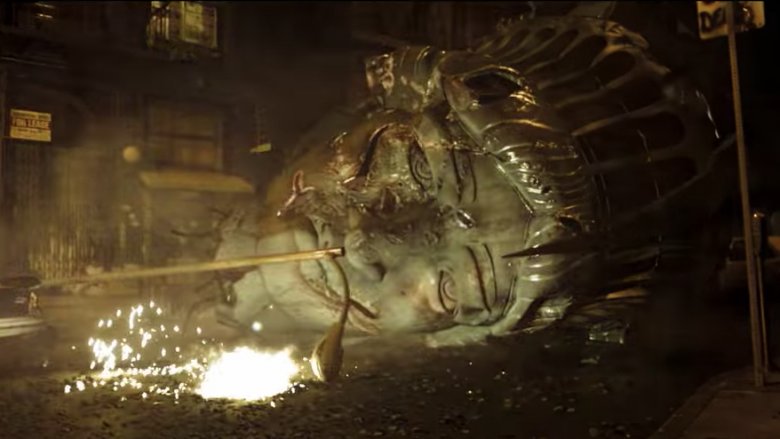The Ending Of The Cloverfield Paradox Explained
Early during Super Bowl LII on Feb. 4, 2018, an advertisement aired for The Cloverfield Paradox, the third installment in the Cloverfield franchise — and in a huge surprise, revealed that the film would be available on Netflix immediately following the game.
Paradox tells the story of a space station crew tasked with activating a particle accelerator that will create a clean and renewable source of energy for a resource-deprived Earth. It works, but creates a rift in space-time, propelling the crew into a parallel dimension. With time travel, alternate dimensions, and that whole "giant monsters invading Earth" thing, the film has a lot going on, so let's break down what exactly happened in the film's conclusion and how it ties in to the rest of the franchise. Here's the ending of The Cloverfield Paradox explained.
We know where the monster came from
The trailer for The Cloverfield Paradox is pretty vague, but it does promise one thing: answers, specifically the "why?" left hanging by the original. The origin of the monster that terrorizes New York in the first film was teased in the months preceding its release through a viral marketing campaign, and The Cloverfield Paradox goes on to make it perfectly clear where the monster came from: an alternate dimension.
Early in the film, we see a news broadcast featuring actor Donal Logue as a theoretician (and author of the book from which the film takes its title). He argues that the use of a particle accelerator could have catastrophic results, melding dimensions and opening portals to new ones. This proves true when the crew finally successfully activates the accelerator. It blasts them into a parallel dimension, and as it does, it opens up Earth to invasion.
The monster in Cloverfield is the result of that dimensional rift. It seems that in solving the world's energy crisis, the crew in The Cloverfield Paradox created an entirely different problem.
The first of many
The Cloverfield monster (or Clover, as it's commonly known) wreaks havoc across New York City in the franchise's first installment. Its rampage proves so unstoppable that the film ends with a massive bomb being dropped on Clover, taking it (and New York City) out for good. If you think that's bad, it's probably important to note that the filmmakers warned us that Clover wasn't fully grown and there could be bigger, badder versions of these creatures out there. The Cloverfield Paradox delivers on that promise, revealing fully-grown versions of Clover — and they've found themselves a new home on Earth.
The film's closing moments reveal that by 2028, there's been a full-on invasion of Clovers all over the planet. We never get a good look at what a world overrun by these monsters looks like, but we know it's bad enough for protagonist Ava Hamilton's husband Michael to not want her to return to Earth after years off-planet. Perhaps we'll see what this world looks like in a future franchise installment, but for now, Michael's warning — and the emergence of a fully-grown creature in the film's closing moments — will have to suffice.
World War III looms
The film takes place in the near future, with the most apparent change being the energy crisis that's the crux of the space crew's mission. The Shepard particle accelerator is meant to create a renewable source of energy to save the world from full-on catastrophic energy deprivation. That said, the film makes it abundantly clear that the energy crisis isn't the only thing on the verge of destroying us — humanity itself is proving a threat to its own existence.
World War III, seemingly sparked by Germany and Russia, is on the brink in the primary timeline of the film. Paranoia is prevalent between the German engineer Schmidt and Russian crewman Volkov, the latter expecting the former to be a spy. Once we journey with the crew to the parallel dimension, we discover that on that Earth, war has already broken out, and that timeline's Schmidt (who we never meet) actually is a German agent. The differences between the two dimensions, big as they might be, seem to be the product of circumstance; for instance, Hamilton isn't on the mission in that dimension because her children are still alive. Given this, it's clear that the primary timeline in The Cloverfield Paradox is so close to war that even if the monsters hadn't shown up, the human race might have gone over the edge all by itself.
Humanity hangs on
Before it was even fully grown, Clover proved so destructive in the first film that it took a (presumably) atomic bomb to take it out. Now that the planet has been invaded by fully-grown versions of that monster, you'd think they'd have the run of the place pretty dang quick. However, The Cloverfield Paradox offers a slight ray of hope.
When Hamilton returns to Earth after the invasion, things admittedly aren't looking great, but the human race is still alive and hasn't been totally beaten down by the monsters — people are still fighting. It's a subtly optimistic message that brightens the film's pessimism. Humanity beat back one of these monsters once, and it isn't going down without a fight.
There's no God Particle
The Cloverfield Paradox, like its franchise predecessor 10 Cloverfield Lane, was known under a different name during its production. Lane was based on a script called The Cellar, while The Cloverfield Paradox was developed as The God Particle. 10 Cloverfield Lane takes place in an underground bunker, which makes its former title perfectly appropriate. However, there's a mysterious lack of a god particle throughout The Cloverfield Paradox.
In scientific terms, a "god particle" is a name for what is properly called a Higgs boson. To put it in the simplest terms possible, it's a particle effectively responsible for the origin of mass. They're also theorized to have the ability to overlap and occupy the same points in space-time — unlike other particles, like electrons or protons.
In theory, god particles may have played a part in the fictional function of the Shepard particle accelerator in earlier cuts of the film. Or perhaps it just served as a cool title to a weird sci-fi movie that dabbled in particle physics. It doesn't matter in the end. There are no god particles in The Cloverfield Paradox. There is a Cloverfield paradox, though, so we can't blame them for switching up the title.
Hamilton and Schmidt saved a world
It's easy to chalk up the efforts of the film's protagonists to a zero-sum game. They go through all of the effort to get back to their home dimension and figure out how to make the particle accelerator work, only to realize as soon as they do that Earth is now facing a problem the accelerator can't fix. It's a bitter twist, one befitting the grimmest of Twilight Zone episodes. However, there's a silver lining: The crew does save Earth. It's just not their Earth they save.
Right before activating the accelerator and heading back to their Earth during the film's climax, Hamilton and Schmidt send the schematics for the Shepard particle accelerator to the parallel Earth, the one at war over energy resources. It might take some time, but this planet now has the means to access clean, renewable energy and save itself. Given this — plus the fact that there's a lack of giant monsters on that planet — Hamilton and Schmidt can still lay claim to having saved the world. They might not have succeeded in saving theirs, but their work will keep an entire planet alive — unless giant monsters eventually show up there too, in which case, bombs away.
The paradox affects time
The Cloverfield Paradox explains how Clover invaded Earth, but in doing so, it creates an even more confusing question. If the crew busted the space-time continuum in 2028, how did Clover show up on Earth in 2008? The answer comes in something of a throwaway moment, but it's there.
It's mentioned at one point that the particle accelerator has not only affected the dimension they're in and the station's placement in the solar system, but also time itself. They've effectively damaged the space-time continuum by activating the accelerator. Given this, it makes sense that the Earth would experience invasions in 2008 and 2028. When the accelerator was activated successfully for the first time, it didn't just open the crew's world up to monsters in that moment — it opened up the world's entire timeline to invasion. Hence the 2008 appearance of Clover.
What about 10 Cloverfield Lane?
While Cloverfield and The Cloverfield Paradox are pretty explicitly tied together, there's far less connection between Paradox and 10 Cloverfield Lane. The second film in the franchise doesn't deal with alternate dimensions or giant monsters at all. Its sci-fi twist comes in the form of an alien invasion, one that's sparked a war of human resistance. Despite the lack of narrative ties to the other two films, Lane does take place in the same world. We just haven't seen how it connects yet.
To be clear, there's no onscreen evidence that the stories are connected. There are no verbal allusions or Easter eggs connecting 10 Cloverfield Lane to the larger Cloverfield universe. Nonetheless, producer J.J. Abrams has gone on record as saying that he considers it a part of the same world as the other films, and that future films in the franchise may expand on its connection to the greater narrative. With the upcoming franchise installment Overlord rumored to take place during World War II, we may only have seen the start of the ways in which these films all connect.
The game has changed
The Cloverfield Paradox's release was unprecedented. Rather than bother with a lot of advertising, press tours, or viral campaigns, Paramount bought a single 30-second spot during the most valuable advertising block of the year and announced that the film would be available on Netflix as soon as the Super Bowl wrapped. It's never been done before, though it may not be the last time.
Releasing a film this way circumnavigates the tricky business of building hype. There were no trailers for people to obsess over, no extensive fan theories to sift through. Moviegoers didn't have a chance to get tired of hearing about the movie before it arrived. The Cloverfield Paradox built its own buzz — the movie's release is the event. While it might not be doing too great critically, it ultimately doesn't matter. A film belonging to a successful franchise hit streaming services with no forewarning and ended up being the biggest story of the night in terms of pop culture. The game has changed, and even if it had turned out to be a masterpiece, the way it arrived would ultimately be its legacy. There's no telling when it will happen next, but we've got a hunch it will.
